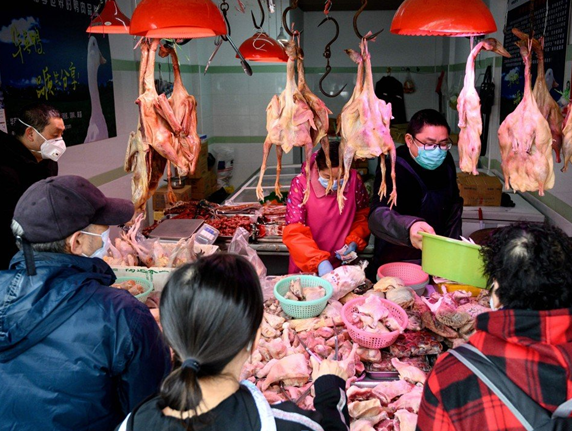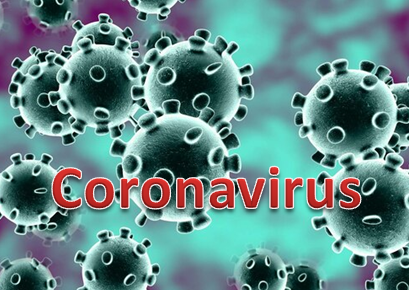Coronavirus and its impact on food safety and food supply
Transmission mode
The Coronavirus outbreak is now officially called COVID19, according to the World Health Organization. The virus killed over 2,000 people (all but 6 in China) and infected more than 75,000 people.
People are not infected with the COVID19 through consumption of food; the virus needs a host (animal or human) to grow and cannot grow in food. While the source of the virus is still unknown, the virus most commonly passed between animals and people and person to person.
Based upon knowledge of other similar (SARS) viruses, the Coronavirus should be destroyed through cooking. The transmission is mainly through breathing in airborne virus from the sneeze or cough of an infected person.
In China poultry and eggs supplies are limited while frozen pork, chicken and beef pile up at ports

The most impact of the Coronavirus on food supply and safety is obviously in China. According to Fortune in China factory output, consumer spending, tourism, and commodity prices dropped significantly. Closed factories and involuntarily idled workers have reduced production and limited product supplies, and as a result, drove up prices.
The hardest hit is in the food sector, which already faced massive shortages due to the deadly African swine fever. The South China Morning Post reported that restrictions on moving livestock have paralyzed the supply chains of poultry and eggs, leaving farmers stuck with extensive inventories. Poultry prices have plunged in recent weeks. Farmers left with extensive inventories of birds and eggs even though the demand fell as restaurants stayed shut.
Chinese officials are predicting that the COVID19 outbreak could affect the availability of poultry and egg products in the second and third quarter of 2020. Many of China’s live poultry markets have been closed, transportation of poultry has been restricted, and some slaughterhouses have been closed.
China’s agriculture and transport ministries asked local authorities to allow companies involved in feed-production and poultry-slaughtering to resume work as soon as possible and overcome disruptions caused by the Coronavirus outbreak.
Thousands of containers of frozen pork, chicken, and beef are also accumulating at some of China’s major ports as transport disruptions and labor shortages slow operations. It remains unclear when port operations will return to normal as truck drivers returning from other cities are quarantined for 14 days, and other transport restrictions on trucks stay in place. Deliveries are piling up at ports, including Tianjin, Shanghai, and Ningbo, since there are not enough truck drivers to collect the containers due to travel restrictions around the country.
The Effect of COVID19 on American Chinese Restaurants
One of the unjustified victims of the COVID19 panic is Chinese restaurants in Chinatowns in major cities. Chinatowns in NYC Manhattan, Queens, and Brooklyn have seen business drop from 50-70% in the last few weeks. The owners of restaurants like historic Nom Wah Tea Parlor in Manhattan describe their environment as a “ghost town”. Restaurants in Boston’s Chinatown are also suffering. The mayor of Boston was dining there in order to show that the restaurants were safe. Business leaders in Houston’s Chinatown are seeing the same situation. Internationally, Chinatowns all over the world are experiencing declining businesses.
Bottom line

Currently, there is no evidence that COVID19 can infect humans through the consumption of contaminated food products. However, it might happen via “smear infection” when a contaminated person smears saliva or mucus on surfaces that get in contact with foods. A person can get COVID-19 by touching a surface or object that has the virus on it and thereafter touching his mouth, nose, or possibly his eyes, but this is not thought to be the primary way the virus spreads. This is an unlikely event due to the low stability of the virus in the environment. The potential contamination can be eliminated by keeping sick people isolated.
Consequently, it is unlikely that the Coronavirus will be transmitted via contaminated food. The same general hygiene rules should usually be applied, such as regular hand washing, and hygiene rules for food preparation must be observed when handling potentially contaminated foods. Since the viruses are sensitive to heat, the risk of infection can be further reduced by heating foods.
The risk of food contamination is minimal, but the impact of the virus on the global food supply might be more significant.

2 responses to “Coronavirus and its impact on food safety and food supply”
The CDC says that there is no evidence that animals or animal products imported from China can pose a risk for spreading COVID19.
The FDA said that they are not aware of any reports at this time of human illnesses that suggest COVID-19 can be transmitted by food or food packaging. However, it is always important to follow good hygiene practices (i.e., wash hands and surfaces often, separate raw meat from other foods, cook to the right temperature, and refrigerate foods promptly) when handling or preparing foods. @ https://www.fda.gov/news-events/press-announcements/coronavirus-covid-19-supply-chain-update?utm_campaign=022720_Statement_Coronavirus%20%28COVID-19%29%20Supply%20Chain%20Update&utm_medium=email&utm_source=Eloqua